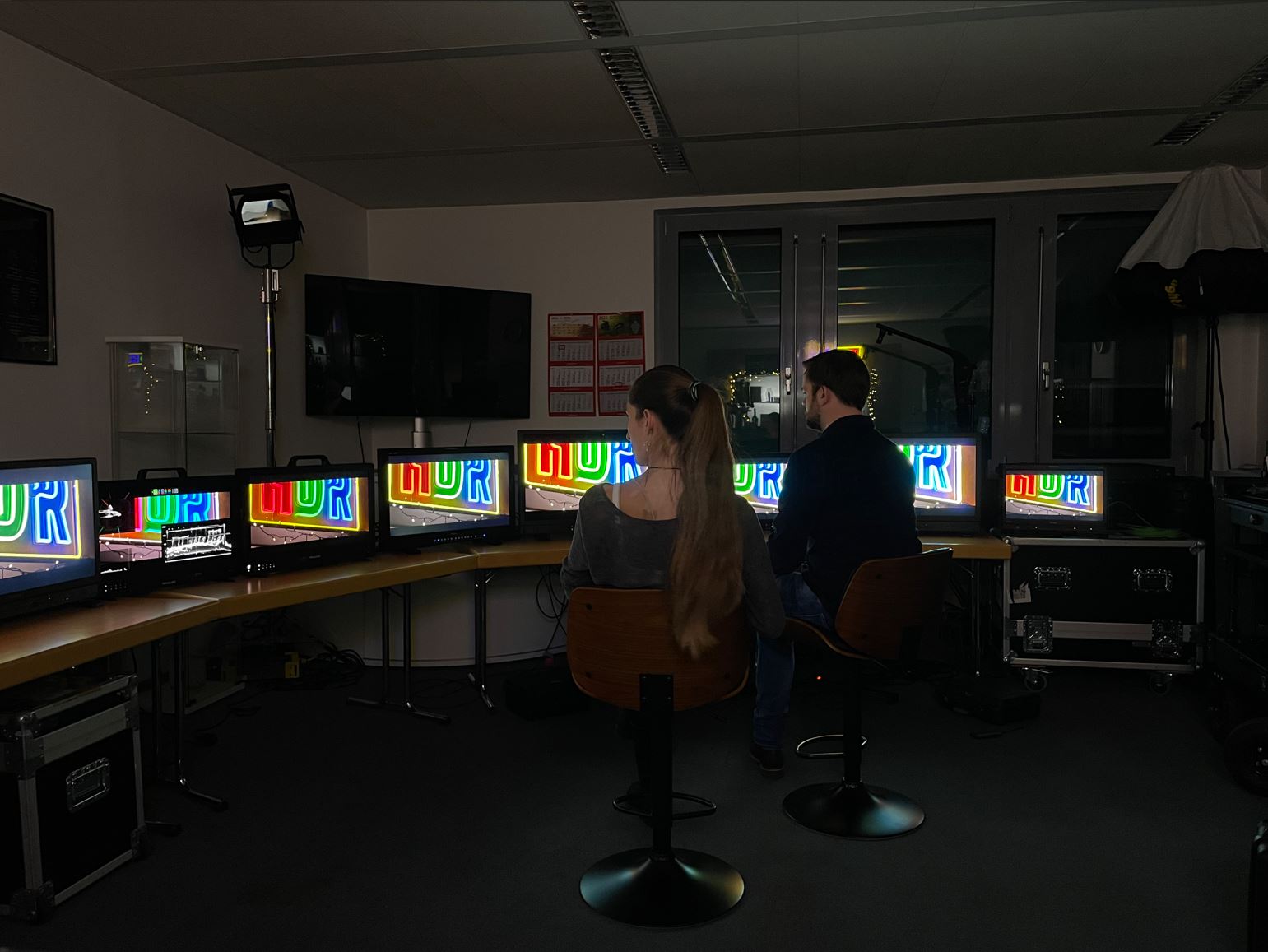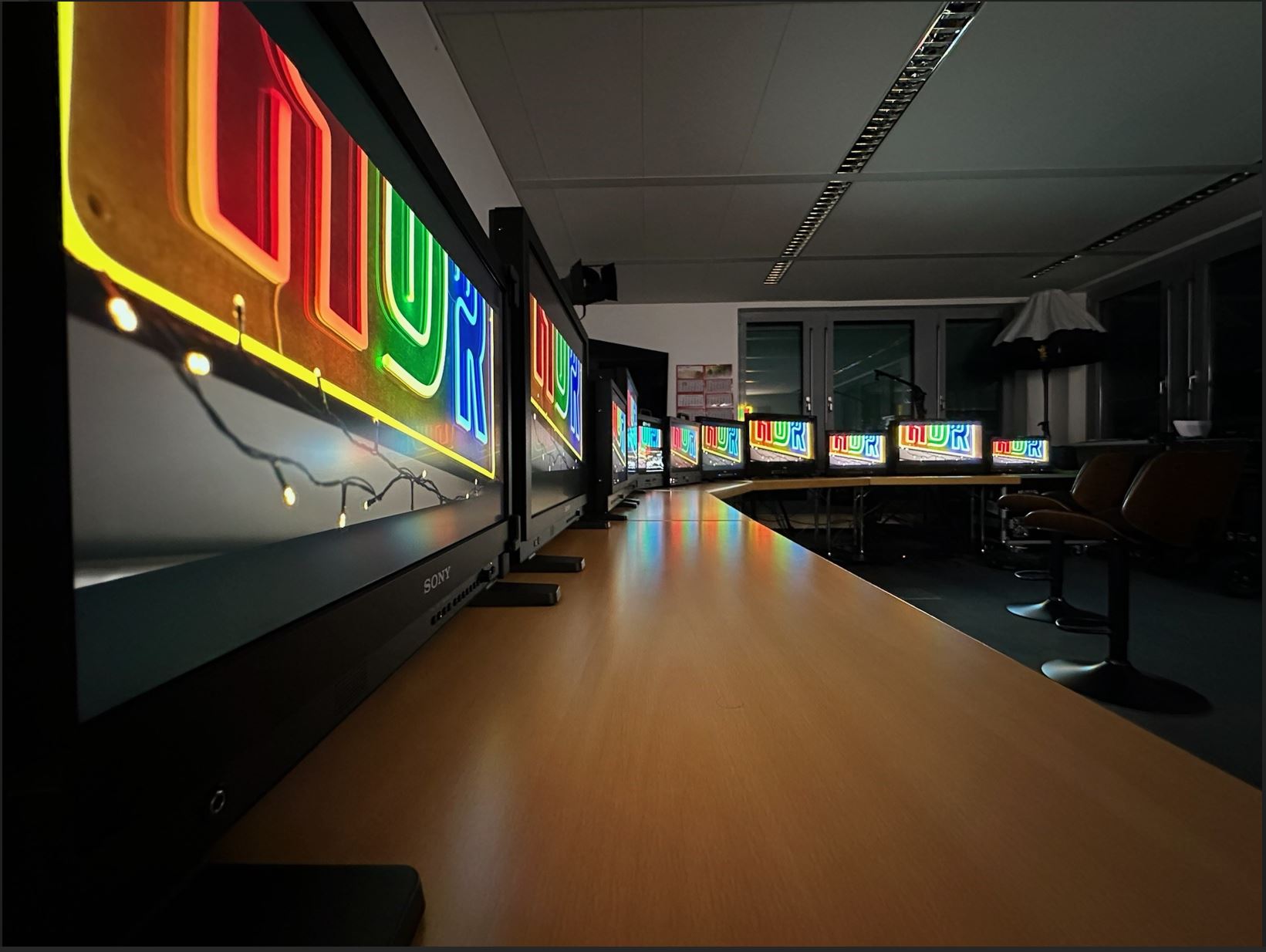HDR monitor test 2.0
Once again, we've decided to expand our 4K monitor test from Spring 2021 (On Set 4K Monitor Test),
addressing and adjusting to current requirements and technical
circumstances (HDR, on-set suitability/postproduction/broadcast).
Initially, we evaluate the monitors "out of the box" and with factory
settings. This means that considering each monitor receives the same
signal, we assess our initial impressions with the naked eye. This
method allowed us to identify a trend in how manufacturers calibrate
their monitors at the factory.
The Sony BVM-HX3110 serves as our
visual reference due to its specifications (black level thanks to
dual-layer LCD, 4000 nits luminance peak, and 1000 nits luminance across
the entire display, etc.) and because we measured it right after
unboxing with CalMan, CR-100, and CR-2501, achieving a Delta E of 0.1
(CIE ∆E2000).
Each of these monitors is calibratable in its own way;
some have limited options, others offer automatic calibration or even
implementations of external software.
Of
course, we select current monitors distributed by us (Band Pro Munich).
The choice also depends on availability and to keep the number of
monitors manageable, we limited ourselves to sizes between 17" and 32".
Since
HDR is very important to us and we noticed that 4K monitors tend to be
in the higher price segment, we chose two models that support HDR but
not 4K.
We tested:
- Canon DP-V1830
- Canon DP-V2730
- Canon DP-V3120
- RGBLink Auro UHD 27 (Gen 1)
- SmallHD VISION-17
- SmallHD VISION-24
- Sony PVM-X2400
- Sony BVM-HX3110
- Sony LMD-A180 (HD)
- Sony LMD-A240 (HD)
- Swit BM-U325MD
- TVLogic LUM-181H
Find our documents and comparison chart here:




